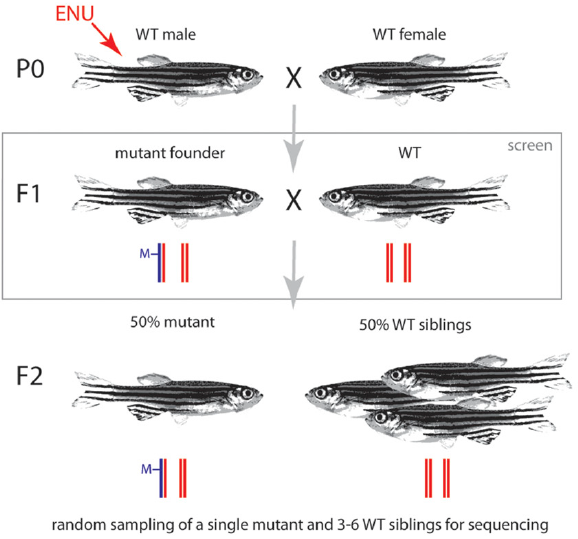Abstract
Large-scale forward genetic screens have been instrumental for identifying genes that regulate development, homeostasis, and regeneration, as well as the mechanisms of disease. The zebrafish, Danio rerio, is an established genetic and developmental model used in genetic screens to uncover genes necessary for early development. However, the regulation of postembryonic development has received less attention as these screens are more labor intensive and require extensive resources. The lack of systematic interrogation of late development leaves large aspects of the genetic regulation of adult form and physiology unresolved. To understand the genetic control of postembryonic development, we performed a dominant screen for phenotypes affecting the adult zebrafish. In our screen, we identified 72 adult viable mutants showing changes in the shape of the skeleton as well as defects in pigmentation. For efficient mapping of these mutants and mutation identification, we devised a new mapping strategy based on identification of mutant-specific haplotypes. Using this method in combination with a candidate gene approach, we were able to identify linked mutations for 22 out of 25 mutants analyzed. Broadly, our mutational analysis suggests that there are key genes and pathways associated with late development. Many of these pathways are shared with humans and are affected in various disease conditions, suggesting constraint in the genetic pathways that can lead to change in adult form. Taken together, these results show that dominant screens are a feasible and productive means to identify mutations that can further our understanding of gene function during postembryonic development and in disease.
